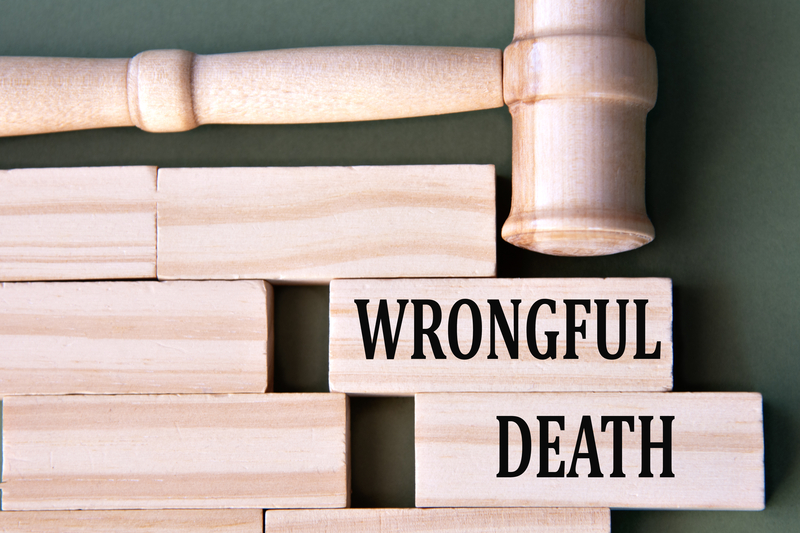When someone files a wrongful death claim in California, there are many aspects of the law to consider, including rules about who is eligible, how long they have to file, and what are acceptable legal grounds for a claim. One question the Sacramento wrongful death attorneys at Guenard & Bozarth, LLP, hear a lot is: What is the one action rule for wrongful death in California? Read on to learn more.
California Wrongful Death
In California, when a person dies as a result of someone else’s negligent or reckless actions, the victim’s family can file a wrongful death claim for damages. Even when a death is caused by an accident, the party that is at fault is responsible for damages, and when that includes someone’s death, the victim’s family can suffer serious and long-lasting consequences as a result. This can include medical and funeral expenses, loss of income, and pain and suffering.
Wrongful Death Grounds
Most wrongful death occurs as the result of an accident. But in some cases where a death occurs due to someone committing an illegal act, the defendant may be charged with criminal offenses, and the victim’s family may also be able to file a civil claim for damages. Where a prosecutor has to prove beyond a reasonable doubt that the defendant committed a crime, a claimant in a civil case only has to prove that the defendant is more likely responsible for the death than not.
In 2022, California had the highest number of medical malpractice complaints per capita of any US state. There were 4,638 complaints, and of those, 1,083 received financial settlements, per the National Practitioner Database.
Beyond criminal acts and medical malpractice, there are several other common kinds of circumstances that can lead to a person’s death. Some of the most common are:
- Car, truck, and other traffic collisions
- Accidents in the workplace
- Defective or faulty products
- Premises liability, like inadequate maintenance, that leads to fatal injury
- Animal attacks, injuries from sports or recreational activities, or others
The One Action Rule
The one-action rule for wrongful death in California states that there can only be a single legal claim against a liable party. If a person slips on a wet floor and later dies from their injuries, for example, the victim’s spouse and siblings can’t file separate legal claims against the owner of the premises. They can, however, combine their claims into one legal action as separate plaintiffs, where they would each show evidence of the damages they suffered due to the death.
While there can only be one legal claim against a defendant, there can be multiple defendants in a single case. For example, a UC Davis student was killed in a bicycle crash on campus near Dairy Road. Two defendants were named in the case: the driver of the truck that hit the student and the Regents of the University of California for failing to have a bicycle-safe traffic design that could have prevented the accident.
Determining Eligibility
For wrongful death cases in California, close family members are generally eligible to seek damages for wrongful death. The state prioritizes parties based on how close their relationship was to the victim, meaning that parties either have to join together in one claim, or a more distant relative can only file if the closer relative does not. The hierarchy is:
- Spouse or domestic partner
- Child or other dependent
- Parent
- Sibling
- Another family member who suffered damages from the person’s death
- Representative of the estate. For example, an executor or administrator
For a California wrongful death claim, claimants have two years from the date of death in most cases. Some circumstances may warrant an extension, such as the cause of death not being immediately clear or the claimant being a minor at the family member’s date of death. Some cases may also have a shorter statute of limitations, such as if a government agency is a defendant in a wrongful death case. The claim generally has to be filed within six months of the death.
FAQs
Q: What Is the New Wrongful Death Law in California?
A: The new wrongful death law in California as of 2022 is Senate Bill (SB) 447. This law updated how damages are awarded in California wrongful death cases so that they can now include the victim’s pain, suffering, and disfigurement prior to their death. Before these changes, settlements could not include those damages.
Q: What Is the Ideal Evidence in a Wrongful Death Case?
A: The ideal evidence in a wrongful death case shows the cause of death and the effect the victim’s death had on their family. This can include financial evidence like bank records, doctor and hospital expenses, and funeral and burial costs, as well as evidence of the mental and emotional hardship of the family’s loss, such as videos and photographs, medical records, police and autopsy reports, and witness testimony.
Q: Is It Hard to Win a Wrongful Death Case?
A: What constitutes a win in a wrongful death case depends on the goals of the claimant. In some cases, the claimant may need a certain amount of financial compensation, and in others, it may be more about the liable party being held accountable. Achieving the desired outcome generally depends on the strength of the evidence, the complexity of the case, and the experience of the attorneys involved.
Q: What Is the Discovery Rule for Wrongful Death in California?
A: The discovery rule for wrongful death in California means that the statute of limitations can be extended in cases where the cause of death – and its link to the specific negligence – is not immediately apparent. For example, if someone dies in a car accident but it is not discovered until later that the accident was tied to a manufacturing defect in their vehicle, the clock starts at the time that discovery is made.
Accountability for Your Loved One’s Wrongful Death
If your family member died because of someone else’s negligence, the experienced legal team at Guenard & Bozarth, LLP can help you file a legal claim for damages, maximize your compensation, and hold the liable party or parties responsible for the consequences of their actions. Contact our office right away to set up a consultation and discuss your legal options.

